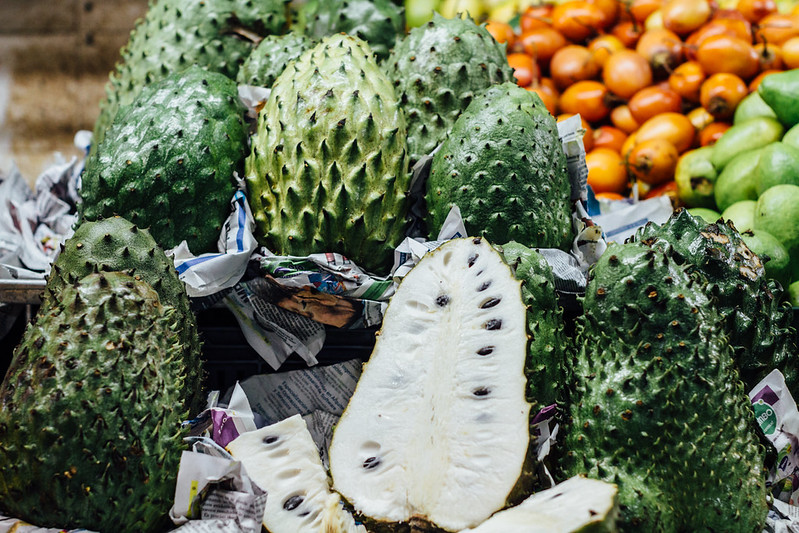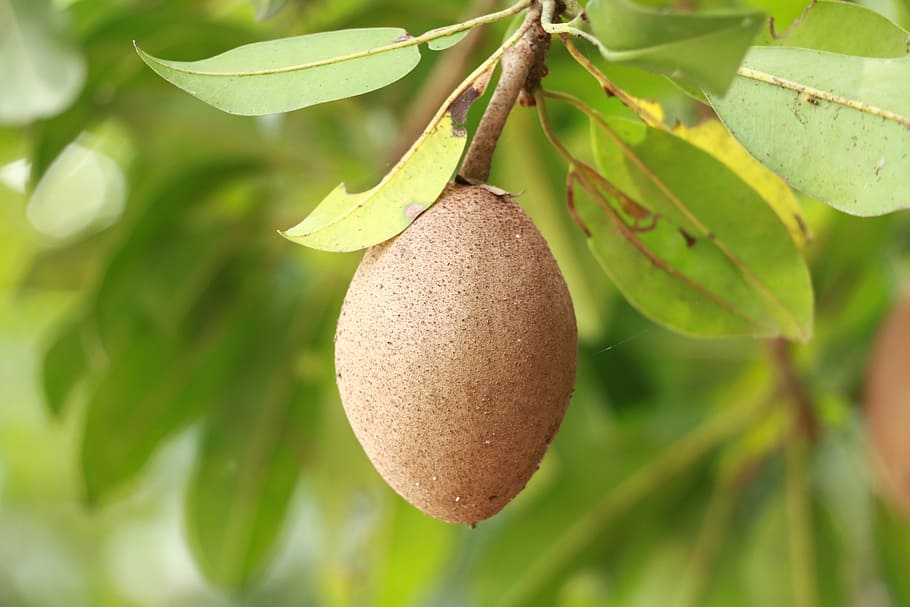
Colombia, with its rich biodiversity, is home to over 1,800 identified fruit species, many unique to the region. The country’s tropical flavors contribute significantly to making Colombian cuisine both delightful and unforgettable, explore the exotic fruits that define this culinary landscape
Lulo
Start your exotic fruit adventure with lulo, a small, green fruit with a unique tangy flavor that’s a cross between lime and rhubarb. Often used to make refreshing juices and cocktails, lulo is a favorite among Colombians for its zesty and slightly sweet taste. When blended with water and sugar, it transforms into a traditional drink called “lulada,” perfect for quenching your thirst on a hot Colombian day.

Guayaba
Guava, or “guayaba” in Spanish, is a beloved fruit in Colombia. It comes in various shapes and sizes, and its flavor can range from mildly sweet to intensely aromatic. Colombians enjoy guava in various forms, including as a fresh snack, in desserts, or in the famous guava paste, “bocadillo,” often paired with cheese for a delightful contrast of flavors.

Soursop (Guanabana)
Soursop, known as “guanabana” in Spanish, is a unique fruit loved for its creamy texture and sweet, tangy flavor. It’s often used in smoothies, desserts, and traditional Colombian beverages. Soursop’s rich taste and potential health benefits make it a sought-after tropical delight.

Pitaya
Colombia’s pitaya, known for its vibrant pink or yellow skin and speckled flesh, is as visually stunning as it is delicious. This exotic fruit has a mildly sweet taste with a hint of pear and kiwi. It’s often eaten fresh or blended into smoothies. Pitaya is not only a treat for your taste buds but also a source of essential nutrients like vitamin C, fiber, and antioxidants.
Curuba
Curuba, often referred to as “banana passionfruit,” is a tropical fruit that combines the tartness of passionfruit with the sweetness of bananas. It has a bright yellow or orange skin and is filled with juicy, seed-filled pulp. Curuba’s distinctive flavor adds a tropical twist to fruit salads, desserts, and beverages. It’s also a fantastic source of vitamins and minerals.

Granadilla
Granadilla, sometimes called “sweet passionfruit,” is a small, round fruit with a tough outer shell that cracks open to reveal a sweet, jelly-like pulp filled with edible seeds. Its flavor is a harmonious blend of sweet and tart, making it a delightful snack or dessert addition. In Colombia, it’s common to eat granadilla by scooping out the pulp with a spoon, savoring each bite.

Papaya
While papaya is not exclusive to Colombia, it deserves a special mention for its widespread popularity. This tropical fruit is enjoyed fresh in the morning, often with a squeeze of lime or a drizzle of honey. Its vibrant orange color, sweet taste, and digestive enzymes make it a perfect start to the day.

Zapote
Zapote, known for its creamy and custard-like texture, is a fruit native to South America. It comes in different varieties, including black sapote and white sapote. Colombians relish the rich, sweet taste of zapote, often using it in milkshakes, desserts, or simply scooping out the pulp with a spoon for a luscious treat.

These unique flavors add a burst of tropical sunshine to every meal and remind us of the natural treasures that Colombia has to offer. Whether you’re strolling through a local market, enjoying a street vendor’s fruit salad, or sipping on a freshly blended juice, Colombia’s exotic fruits are sure to tantalize your taste buds and leave you craving for more of these tropical delights.
See all the latest news from Colombia and the world at ColombiaOne.com. Contact our newsroom to report an update or send your story, photos and videos. Follow Colombia One on Google News, Facebook, Instagram, TikTok and subscribe here to our newsletter.


